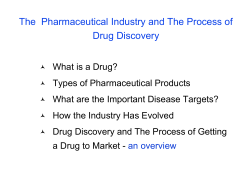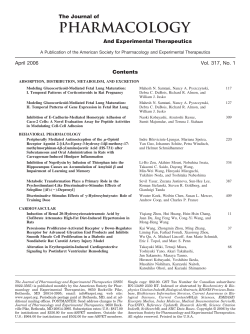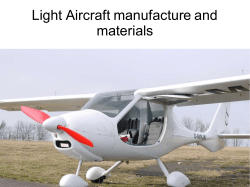
Abigail Cortez , Synthia Mellon Introduction Synthesis of
The Role of Allopregnanolone in Neuroinflammation Abigail 1 Cortez , Synthia 2 Mellon 1Department of Molecular & Cell Biology, University of California, Berkeley 2Department of Obstetrics, Gynecology, & Reproductive Sciences, University of California, San Francisco Introduction Data & Results Conclusions Neurosteroids are part of a new class of steroid hormones that regulate neuronal functions by acting as ligands for neurotransmitter receptors like GABAA and NMDA receptors (1). The mechanisms through which these compounds operate are still largely unknown. Previous research has shown that allopregnanolone (ALLO), a metabolic derivative of the more common steroid hormone progesterone, plays several neuroprotective roles, one of which is the reduction of neuroinflammation in certain neurodegenerative disorders (2). The goal of our project was to determine the molecular mechanism--that is, the receptor--through which ALLO is working to exert its neuroprotective effects. The two candidate receptors we studied are the ligand-gated ion channel GABAA receptor, for which ALLO is already a known modulator, and the bile acid G-protein coupled receptor TGR5. Both receptors have been implicated in cell-mediated immunity (3). Part 1: GABAA Receptor and Cell Proliferation Assays • ALLO reduces RAW cell proliferation • ALLO appears to work like GABA in reducing RAW cell proliferation • ALLO may work through a GABAA receptor to reduce neuroinflammation • We have identified a new receptor for ALLO—the TGR5 receptor • TGR5 is expressed in the brains of normal mice • Binding of ALLO to TGR5 may contribute to the neuroprotective effects of ALLO that we have seen in mouse models of neurodegeneration. Synthesis of Allopregnanolone CHOLESTEROL P450scc PREGNENOLONE 3-HSD PROGESTERONE 5-Red allopregnanolone 5-DIHYDROXYPROGESTERONE 3-HSD 35-TETRAHYDROPROGESTERONE (ALLOPREGNANOLONE) Figure 1: Effect of allopregnanolone and GABA on RAW 264.7 mouse macrophage BrdU incorporation. Methods: 5x103 cells were plated. ALLO, GABA, or ALLO & GABA was added for 72 hours. BrdU was added in the last 24 hours. Cells were fixed and incubated with a BrdU antibody and a colorimetric substrate. Absorbance, a measure of cell proliferation, was read at 370 nm (y-axis). N = average of 12 wells/treatment + SEM. Results: ALLO and GABA reduce RAW cell proliferation. Part 2: ALLO Stimulation of TGR5 Bile Acid Receptor (a) Future Directions • Create a plasmid containing TGR5 cDNA and the neomycin resistance gene to better select for transfected 293 cells and to further study signaling caused by ALLO stimulation • Study the effect of ALLO on intracellular calcium levels (flow cytometry experiments) • Study the effect of ALLO on lymphocyte NMDA receptors Figure 2(a): Effect of ALLO on 293 kidney cells that were transiently transfected with hTGR5 receptor cDNA and CRE-Luc DNA (a cAMP reporter). Methods: 24 hours after transfection, ALLO or LCA, lithocholic acid, (a known TGR5 receptor ligand) was added for 24 hours. Stimulation increased cAMP synthesis, leading to an activation of CRE-Luc which causes Luciferase synthesis. Fluorescent light detection was used to measure Luciferase activity. Light was quantified in Relative Light Units (RLU). Results: ALLO stimulates the TGR5 receptor in a dose-dependant manner. Possible ALLO pathways via TGR5 receptor: (b) References & Acknowledgements Figure 2(b): Western blot showing amount of ERK phosphorylation at various time points after ALLO stimulation of 293 cells transiently transfected with TGR5 receptor cDNA. Gs Gq ALLO activated TGR5 receptor Gi -arrestin cAMP , ERK Ca2+, IP3, ERK cAMP , ERK ERK (1) Belelli, D. and Lambert, J. J. 2005. Neurosteroids: endogenous regulators of the GABAA receptor. Nature Reviews Neuroscience 6, 565-575. (2) Mellon, S. H., W. Gong, and M. Schonemann. 2008. Endogenous and synthetic neurosteroids in treatment of Niemann-Pick Type C disease. Brain Res Rev 57(2):410-20. (3) Kawamata, Y. et al. 2003. A G-protein-coupled receptor responsive to bile acids. J Biol Chem 278: 9435-9440. Thank you to Phuong Hoang, Marcus Schonemann, and my mentor Synthia Mellon of the Mellon Lab.
© Copyright 2025









